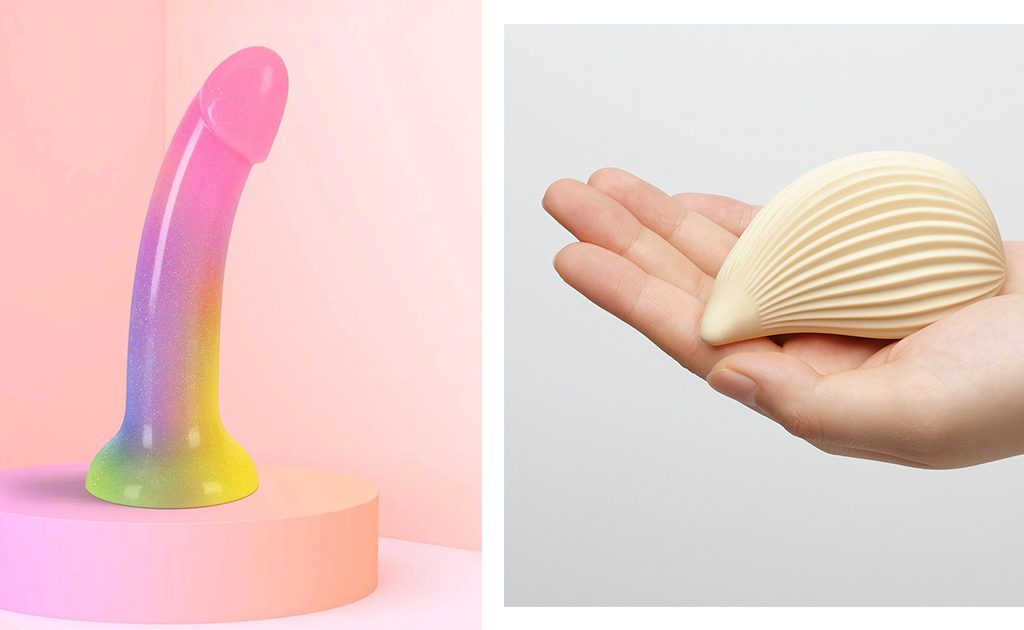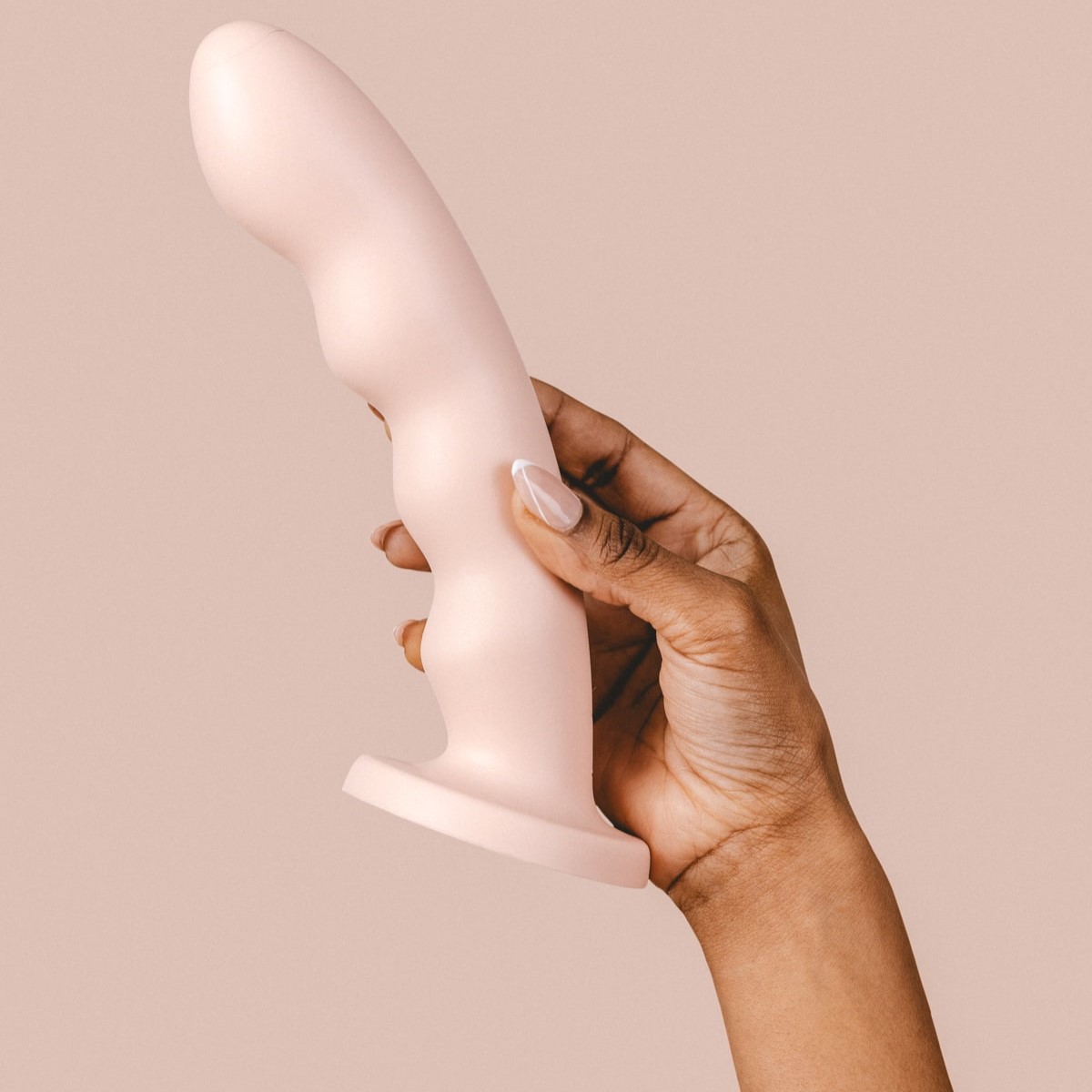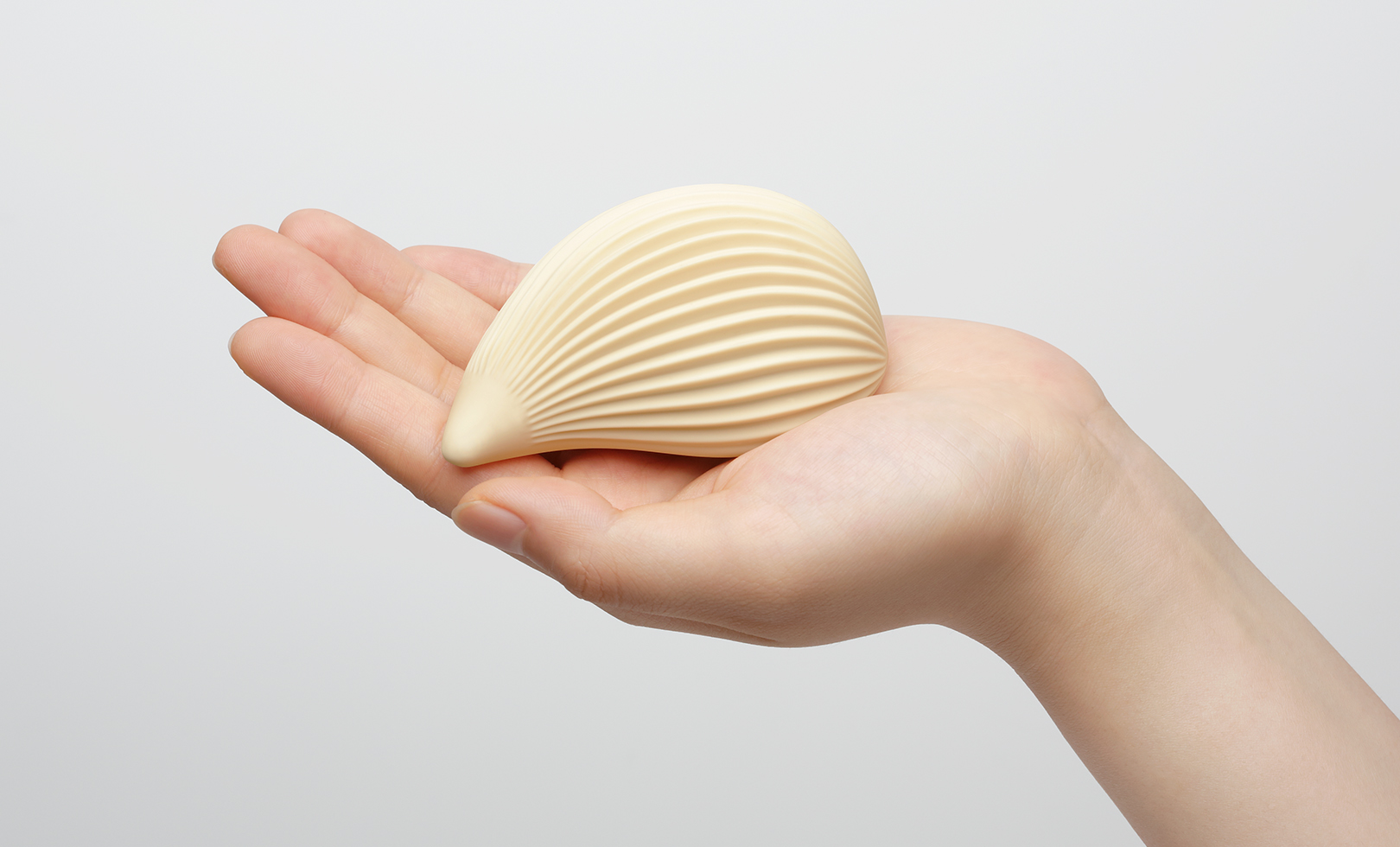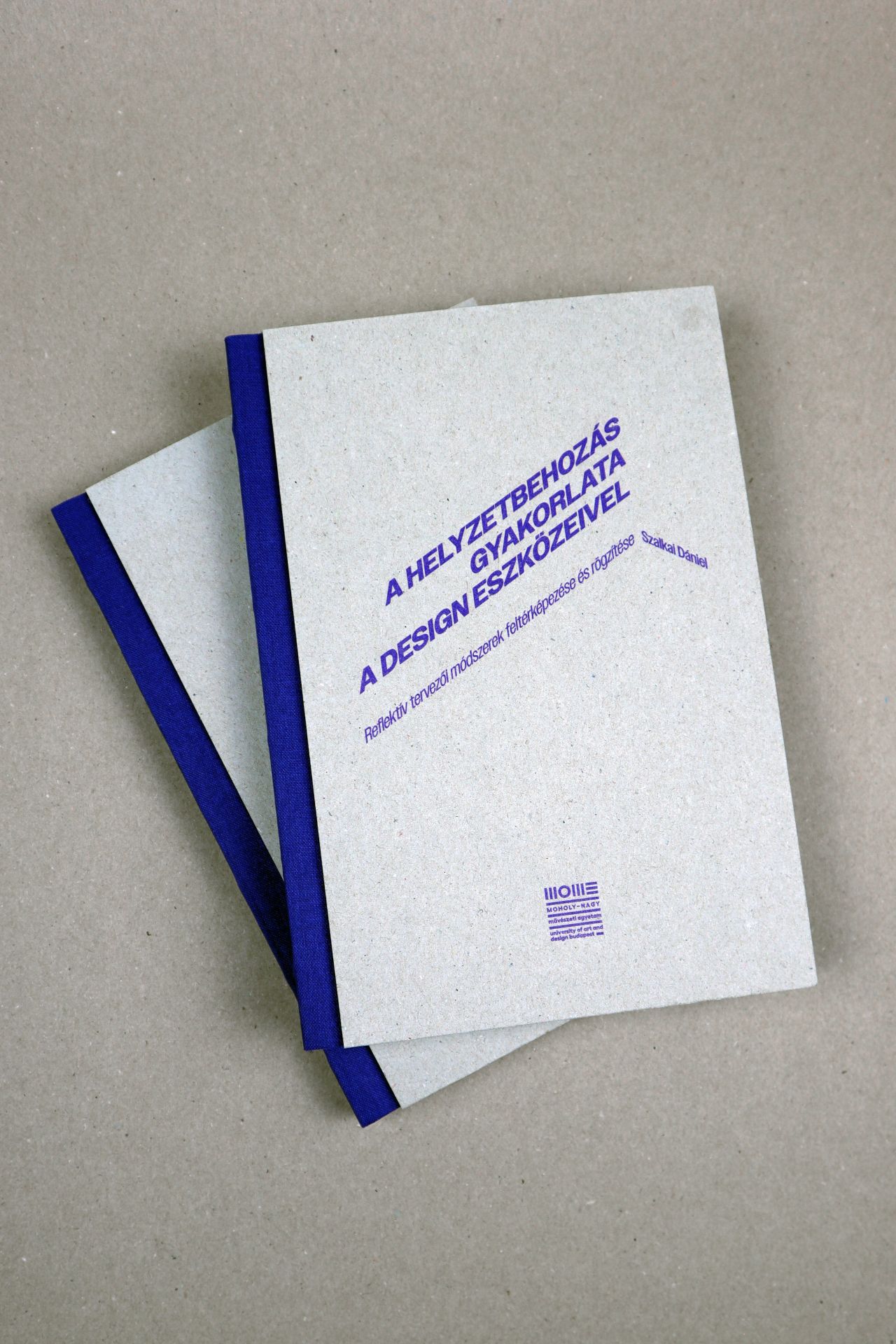

Behind Closed Doors – Exploring new paths in intimacy, Part I.
When first discussing sex toys, the subject was so heavily tabooed, filled with prejudices, unexplored, and elusive that writing a series of articles about it seemed unthinkable. However, the popularity of these items highlighted the importance and relevance of discussing them. In our new series, Exploring new paths in intimacy, we aim to map out the socio-cultural, market, and industrial interactions within the sex toy industry.
Source // emojibator.com
Pleasure, Sex, Sexuality
We will discuss a topic that is both novel and worn out. It is novel in the sense that, despite it currently enjoying its golden age, it is far from being exhausted or defined, nor is it put into perspective in Hungary. At the same time, it is worn out because the terminology that can be used to address it is extremely politicised and emptied of meaning. We feel it is our duty to problematise the politically charged nature of these concepts and, within possible limits, distance ourselves from them, positioning ourselves similarly to studies that use terminology focusing on increasing sensitivity and medical perspectives, which are still not within sight in the Hungarian scene. Terms like sexual health, sexual wellness, intimacy, pleasure, and sexual diversity imply approaches that are a departure from the usual, ingrained concepts. While sex is partly “natural” due to its reproductive function, we often conflate it with sexuality, which is heavily culturally defined. The enjoyment, discovery, and experience of the body extend beyond sexual organs-based pleasure. Therefore, pleasure is different from sex. [1]
The articles and studies reviewed are not drenched in bodily fluids, and the products featured are not just self-serving items but socially and culturally embedded. Within this conceptual framework, we aim to explore how desires and the responses provided through the toys designed for this purpose are organic, constructed, and culturally based.
We want to highlight other often-underrepresented dimensions of sexuality. This series of articles is not intended to offer a counterpoint to male sexuality; rather, the goal is to shed light on a hierarchical narrative system where any form of sexual expression differing from the “dominant narrative” has long been seen as questionable, contemptible, or even deviant. Essentially, acts that seemingly contradict accepted normative practices – such as sex involving objects or centering on female pleasure – have stigmatised all forms of “otherness” and hindered efforts to dismantle the hierarchical economy of pleasure.
As a rule, sexual behaviour is morally regulated by the norms of a given society. Historically, sexual morality has been constituted by mutually exclusive binaries that categorise acts as either legal or forbidden, pure or dangerous. [2] These rules determine what is considered right or wrong in a sexual context. Within this moral landscape, sex solely between bodies is deemed permissible and good, while sex involving objects is pushed to the fringes of immorality. This split relegates certain forms of sexuality to ”behind closed doors” [3].
This taboo-inducing forbidden feeling – rooted in shame – has been linked to a false image that focused exclusively on satisfying male consumer desires for a long time. This largely defined women’s positions and influenced their attitudes toward their own and their partners’ sexuality. The most typical and recurring harm in this context was caused by the porn industry, which emphasised that the cause and effect of sex is male orgasm.
By articulating conceptual uncertainties, one can reach specific practical doubts connected to the societal and scientific evaluation of sex toys: “Although the use of vibrators is widespread, the use of sexual products is severely under-researched. [4]
Design-oriented analysis is ingrained this issue: our article series emphasises the role and significance of design within this maze. How can the practices and design methods of the industrial design profession permeate the practices of porn culture in the adult industry, thereby significantly improving the quality of the product genre?
Source // designscene.net
Evolving Perspective
To answer this question, we should take a look at how we have arrived at today’s standard of products that not only meet aesthetic quality and global product design manufacturing standards but also enhance female and couple pleasure. Exploring the historical background reveals why feelings of shame often arise when discussing sex toys. Why are these items considered needing to be hidden, shameful, highly intimate, and personal, and why do we sometimes attach moral weight to them? The answer largely lies in the sex toy industry, which evolved from the adult industry of the 1960s and 70s. Historically speaking, the sex industry was geared towards satisfying heterosexual male consumers, meaning that products designed for female sexual use were enclosed within a strongly male-oriented industry and primarily focused on male sexual arousal; women appeared merely as objects of desire, not as sexual actors. Why, then, are sex toys primarily associated with female pleasure today?
This apparent contradiction can be resolved by understanding to what extent the previously discussed sexual script is organic or artificial. According to Foucault, identity – including sexual identity and behaviour – is developed through regulatory practices. Thus, sexuality, and indirectly sex toys, represent sexual politics. Accessing pleasure and being aware of our individual needs are not just politicised but inherently political issues. This is because the sexualising practices of power are deeply essentialist: they view human bodies within a binary coordinate system, constructing identities based on masculine versus feminine (physical) traits. Furthermore, they define biological sex not as a given, but as a cause of sexuality and desire. For women, this means the primacy of phallic sex toys dictates a heterosexual concept of sexuality, assuming penetration is necessary for achieving orgasm. Hyper-realistic dildos determine and perpetuate our relationship to sexual acts and reinforce binary, universalising notions of gender. This implies that sex can only serve reproductive purposes involving penetration, where pleasure is not the aim but at best a random consequence. However, by removing this framework from the subject and dismantle the demarcation lines, we can arrive at what Foucault described: sexuality has a diffuse nature. Desire is not essential but unstable and dispersed, inherently lacking moral content, which fundamentally opposes practices aiming to create the illusion of normativity.
At the end of the 20th century, it was not the absence of contemporary technological capabilities that hindered the general commercial acceptance of the product genre and the creation of products better suited to the needs of female consumers of the time. Rather, it was the socio-cultural associations surrounding the sex toy industry. The perception of sex toys being closely linked to pornography or its values was – and continues to be – influenced by legal definitions, which in most cases result in legal marginalisation – a topic that will be discussed in more detail in later articles. In brief, objects of sexual arousal have been exclusively depicted as obscene, with little regard for the lack of industry regulation. Consequently, two main factors have shaped the types of products manufactured: companies designing according to the sexual ideals and norms of heterosexual men, and the long-standing socio-cultural beliefs of national authorities and religious groups about what constitutes – or should constitute – obscene.
The extensive damage caused by this only began to be addressed at the turn of the 21st century when the design industry took notice, and designers began entering the market as manufacturers and entrepreneurs. This shift led to a change in the values and meanings attributed to sex toys. [5] However, by that time, the narrative promoted by the porn industry and the resulting moral content had already deeply biased our attitudes towards the product genre of sex toys. For a long time, the conventions and aesthetics established by the adult industry, tied to pleasure objects, did nothing to help either. Visualisations of genitalia became one of the key stylistic genres of the industry. Thus, the aesthetics of realistic genitalia – dildos, artificial vaginas, sex dolls – were firmly embedded in the consciousness of both consumers and designers.
Source // libwomenstore.com, ladea.hu, iroha-tenga.com
Compared to this, how are contemporary design practices different? When remaining within the confines of the framework defined by the concepts of “normal” and “deviant”, a trend towards decentralisation emerges, with individual needs coming to the forefront instead of accepted sexual norms. Designers respond to these, which from a market perspective can lead to greater design freedom and more noticeable product diversity. With this evolving mindset, new tools and sex toys are developed, experimenting with all kinds of forms, sizes, and unusual materials. Since design has the capacity to harmonise senses and perceptions, this process can encompass both objects and less material elements, such as the enhancement of sensory perception.
Designers are moving away from traditional models, shifting focus from objects solely designed for penetration to products that promote diverse sensory pleasures and foreplay. Based on their fragmented experiences, they construct authentic and multifaceted modes of feeling, sensing, touching, relating, enjoying, caring, and desiring.
The values that guide the production or design of sex toys, and those that control the means of production and distribution, reflect the sexual morals, laws, and concepts of obscenity of the various era. That means that rethinking the concept of pleasure equates to disrupting social norms. Industrial design practices and methods have permeated the porn culture of the adult industry , significantly altering the quality of product genres. This new perspective appears to open the world of sex aids to mainstream consumer acceptance. We believe this relationship demonstrates that a different kind of intimacy and discourse can be developed through the design of pleasure objects.
Our article series will explore his different mode of discourse. How can a dildo be seen as a tool of oppression and liberation at the same time? How is someone who purchases a sex aid viewed? What spaces and platforms are available for this, and how do the presence or absence of regulations affect the democratisation of pleasure? How do aids appear in heterosexual and homosexual relationships, and what about devices intended for solo use? Our series we will attempt a self-reflective contemplation of these questions.
// /
Eszter Sára Szabó is a design theory MA student at the Moholy-Nagy University of Art and Design. Her paper “The New Era of Pleasure” which serves as the starting point for the article series, was shortlisted for the Stefan Lengyel Scholarship of Excellence in the spring semester of 2021/2022.
[1] [4] Vanessa Carpenter, 2018. Sarah Homewood, Majken Overgaard, Stefanie Wuschitz. From Sex Toys to Pleasure Objects. DOI:10.14236/ewic/EVAC18.45
[2] Gergely Csányi. 2020. A szexuális forradalom politikai gazdaságtana „Vaginális orgazmus”, pornó és homofóbia a modern világrendszerben. (The Political Economy of the Sexual Revolution “Vaginal Orgasm”, Porn, and Homophobia in the Modern World Order.) (117–118): 19–51. DOI: https://doi.org/10.32564/117-118.2
[3] Norbert Elias (1987 [1937–1939]): The Civilizing Process. Sociogenetic and Psychogenetic Investigations Budapest: Gondolat.
[5] Julier, G. 2014. The Culture of Design, 3rd ed., London: Sage Publications, 11.







